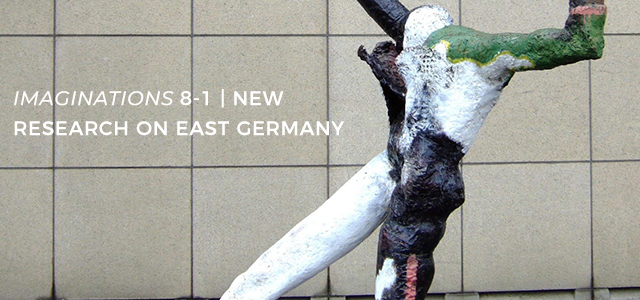Beyond Domination: Socialism, Everyday Life in East German Housing Settlements, and New Directions in GDR Historiography
DOI:
https://doi.org/10.17742/IMAGE.GDR.8-1.3Abstract
Abstract | Communist societies in Eastern Europe have left behind massive prefabricated housing settlements within and outside cities as perhaps their most visible legacy, often assumed to be a negative legacy. Yet this assumption is a superficial judgment, one indicative of a larger trend in the history of Eastern Europe, especially that of East Germany, which only operates within a framework of power and state versus society. What happens when we examine everyday life in socialism without taking as our starting point a search for state power as the goal of the research? Removing this solipsistic framework, we see a different, more balanced picture, not one that necessarily whitewashes or ignores the presence of the state, but one that clearly tells the story of a kind of socialism that was experienced by ordinary people as a tight-knit community rather than a form of top-down control. Such an analysis points the way forward to a reassessment of Eastern European communist society. Résumé | Beaucoup des grandes ensembles préfabriqués survivent dans les villes des sociétés communistes. Ils sont l’héritage le plus visible de communisme, lieux de mémoire d’un monde profané. Mais ce jugement est superficiel, et c’est partie d’une tendence plus grande dans l’histoire de l’Europe de l’Est, notamment de l’histoire de RDA. Cette tendence perçoit seulement le système de pouvoir. Je vois l’histoire quotidienne dans les ensembles. Cette perspective révèle une société qui a bon fontionné et commence une révaluation de la socio-histoire des pays communists dans l’Europe de l’Est.Downloads
Published
2018-04-20
How to Cite
Rubin, E. (2018). Beyond Domination: Socialism, Everyday Life in East German Housing Settlements, and New Directions in GDR Historiography. Imaginations: Journal of Cross-Cultural Image Studies, 8(1), 34–47. https://doi.org/10.17742/IMAGE.GDR.8-1.3
Issue
Section
Articles
License

This work by https://journals.library.ualberta.ca/imaginations is licensed under a Creative Commons 4.0 International License although certain works referenced herein may be separately licensed, or the author has exercised their right to fair dealing under the Canadian Copyright Act.




